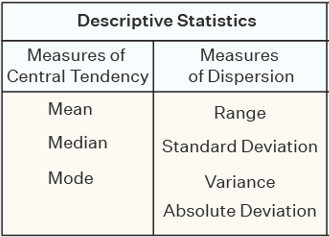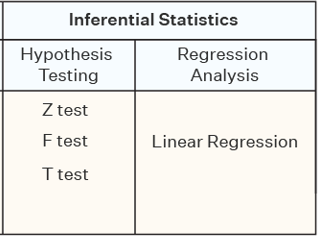Chap 1.3: Statistics and the Data Analysis Process
1/6
There's no tags or description
Looks like no tags are added yet.
Name | Mastery | Learn | Test | Matching | Spaced |
|---|
No study sessions yet.
7 Terms

Descriptive statistics
Includes methods for organizing and summarizing data.

Inferential statistics
Reaching conclusions about a population based on the information provided by a sample.
Give a brief definition of the term population.
The entire collection of objects or individuals about which information is desired.
Give a brief definition of the term sample.
Subset of the population, selected for study.
Based on a study of 2,436 children between the ages of one and four, researchers at a certain college concluded that there was an association between iron deficiency and the length of time that a child is bottle-fed.
1) What is the population of interest?
2) What group constitutes the sample?
1) All children aged between the ages of one and four.
2) The 2,436 children that were in the study
The supervisors of a rural county are interested in the proportion of property owners who support the construction of a sewer system. Because it is too costly to contact all 6,000 property owners, a survey of 200 owners is undertaken.
1) What is the population of interest?
2) What group constitutes the sample?
1) The 6,000 property owners
2) The 200 owners
A building contractor has a chance to buy an odd lot of 1,000 used bricks at an auction. She is interested in determining the proportion of bricks in the lot that are cracked and therefore unusable for her current project, but she does not have enough time to inspect all 1,000 bricks. Instead, she checks 100 bricks to determine which ones are cracked.
1) What is the population of interest?
2) What group constitutes the sample?
1) All 1,000 bricks in the lot
2) The 100 bricks selected for inspection